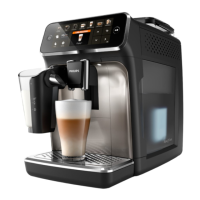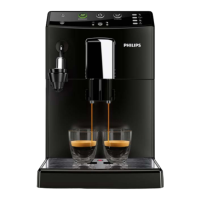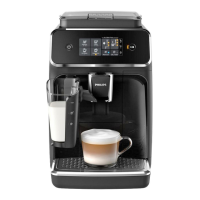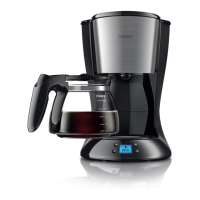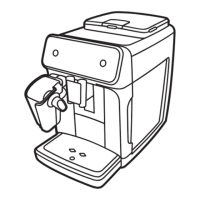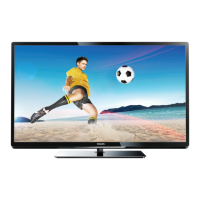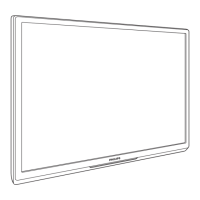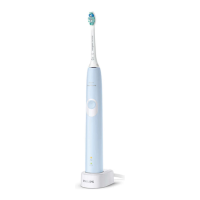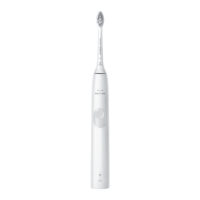Do you have a question about the Philips 4300 Series and is the answer not in the manual?
How to find your TV's model and serial number and register it.
Contacting Philips for support, repair services, and warranty information.
Steps to update the TV's software using a USB drive or Over-the-air.
Information on replacing batteries, cleaning, and key functions of the remote.
Importance of reading safety instructions before using the TV.
Instructions and VESA codes for wall mounting different TV series.
How to connect the power cable and switch the TV on.
Instructions for switching the TV on, to standby, or completely off.
Using high-speed HDMI cables for best quality and connecting DVI devices.
Viewing photos, playing music and videos from a USB flash drive.
Pausing or recording digital TV broadcasts using a USB hard drive.
Steps to connect the TV to the Internet via a wired network connection.
How to watch TV channels, switch channels, and use the channel list.
Guides on installing, searching, and tuning TV channels.
Automating the search for new digital channels.
Testing signal quality for digital channels to ensure proper reception.
Steps to update or re-install satellite channels and manage settings.
Solutions for common issues like not finding satellites or poor reception.
Opening, navigating, and viewing programme details in the TV Guide.
Steps to set a future or ongoing program for recording.
Requirements for pausing and recording digital TV, including USB drive.
Recording digital TV broadcasts and the necessary equipment.
Starting an immediate recording of the current program.
Scheduling recordings for upcoming programs using TV Guide data.
Pausing and resuming a live digital TV broadcast.
Viewing media files from USB drives on the TV.
Playing video files from USB devices.
Controls for playing videos, including pause, rewind, and skipping.
Using quick settings and accessing the comprehensive settings menu.
Adjusting picture style and other visual settings.
Resetting all settings and performing a full TV reinstallation.
General advice and resources for troubleshooting TV problems.
Troubleshooting steps when the TV does not switch on.
Troubleshooting issues with the TV not responding to the remote control.
Troubleshooting issues with channel installation and reception.
Troubleshooting common picture problems like no picture or distortion.
Troubleshooting sound issues like no sound or poor sound quality.
Troubleshooting HDMI connection issues, HDCP, and EasyLink.
Troubleshooting why media files are not displayed from a USB device.
Important safety instructions and precautions.
Covers electrical safety, child safety, overheating, hearing protection, and handling.
| Milk Frother | Classic Milk Frother |
|---|---|
| Number of User Profiles | 1 |
| Display | Touch Display |
| Pump Pressure | 15 bar |
| Adjustable Coffee Strength | Yes |
| Adjustable Grinder Settings | 12 |
| Dishwasher Safe Parts | Yes |
| Customizable Settings | Yes |
| Series | 4300 |
| Color | Black |
| Programmable | Yes |
| Brewing Unit | Removable |
| Dimensions | 246 x 372 x 433 mm |
| Weight | 8 kg |
| Power | 1500 W |
| Voltage | 230 V |
| Type | Automatic Espresso Machine |
| Coffee Bean Capacity | 275 grams |
| Water Tank Capacity | 1.8 L |
| Grinder Type | Ceramic |
| Coffee Specialties | Espresso, Coffee, Americano |
